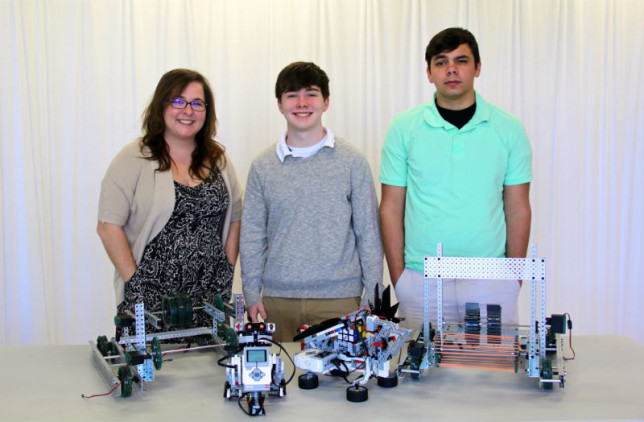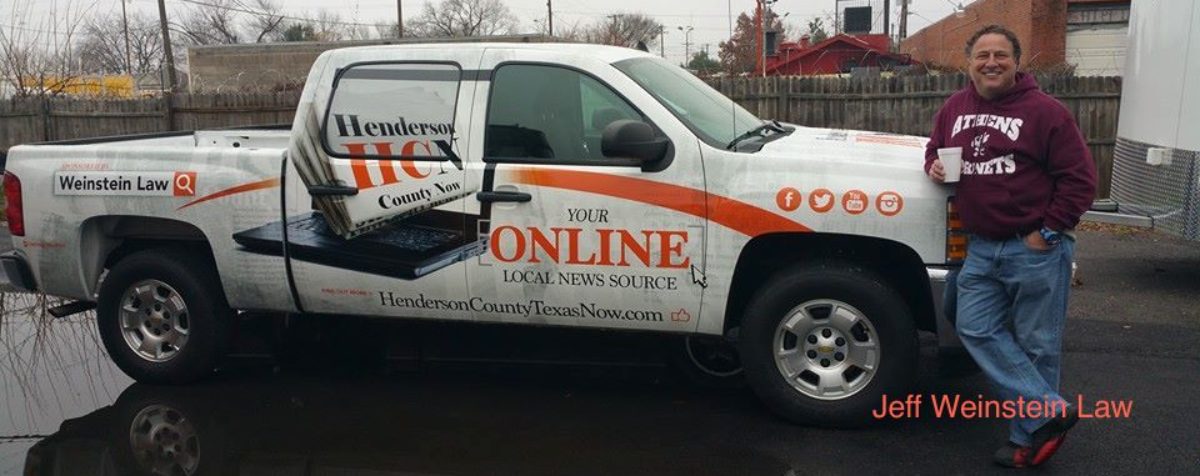
By Toni Garrard Clay/AISD Communications Specialist
Not that long ago, an intrepid group of high school students building and programming robots would have been the setup for a Spielberg movie. Today, it’s a class description at Athens High School. Robot that shoots baskets? Check. Robot that solves a Rubik’s Cube? Check. Teens who are having fun while gaining highly-marketable, real-world skills? Super check.
There were two things that happened this school year to make the class a reality. First, teacher Julie Whitley, with the help of a team of students, started a campus chapter of the Technology Student Association (TSA). That opened the door to robotics competitions, but for one minor problem: no funding for the equipment. Enter the Athens Public Education Foundation. APEF awarded Whitley a $3,000 grant to purchase necessary hardware and software robotics kits and components. The equipment was purchased in January, and the team was up and running.
“They were so gung-ho and excited about it,” said Whitley, who in addition to teaching several different classes, is also TSA sponsor. “We’ve been methodical in spending those funds on what we needed, versus what we wanted. We took our time.”
The robotics team will enter a Lego-sponsored competition in May. They will have to build and program a robot on site to complete different tasks, such as lifting an item, following a line and climbing a hill. The team earns points based on how much the robot achieves and how quickly.
Students will be competing April 14-16 in a VEX robotics competition. A VEX kit includes components such as electric motors, wheels, gears, sensors and a programming kit. The competition objective changes each year. They have already started working on their submission: a robot that can successfully and repeatedly shoot a ball into a net.
“VEX robots involve a lot of trial and error,” said Whitley. “They have to be able to program; they have to know electronics; they have to know about gears. There’s a lot of troubleshooting that goes into it.”
“The most challenging thing is coming up with the idea of how to get it started and finding the right parts to work with,” said junior Dakota Stone, who has plans to enlist in the Air Force upon graduation and work in air traffic control.
For fellow junior John Baldwin, it’s not getting started but changing course that poses the most challenge. “It’s coming up with an idea, getting to a certain point and then getting another idea and having to backtrack seven steps,” he said. “It’s frustrating, but it works out for the best.”
Only three months since its start, the class consists of 10 students, five of whom Whitley describes as “very invested.” She expects the class to grow and is impressed by the benefits she already sees.
“Students have to learn how to merge their ideas,” she said. “They all have good ones, but they have to work as a team. … When they have an idea, they have to think about how it’s going to work with all the other elements.”
“It makes me think a lot more mechanically and longterm, because it’s easier to have a better idea now and plan for that, rather than go with whatever I think of right away,” said Baldwin, who plans to study computer science in college.
Whitley has no background herself in robotics and has had to learn right along with her students. “It’s fun to learn new things. The kids know I don’t know 100 percent what I’m doing, but that I’ll find out, because that’s what they have to do, too. It keeps things interesting.”
